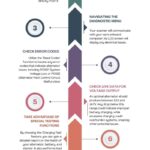Swapping an older OBD1 SR20 engine into a newer OBD2 vehicle, like a Nissan 200sx (B14), presents unique challenges. One common issue involves integrating the OBD1 engine’s alternator with the OBD2 vehicle’s electrical system. This guide focuses on converting an OBD1 harness to work with an OBD2 alternator, ensuring your SR20 swap runs smoothly.
While a direct plug-and-play solution isn’t always possible, understanding the wiring differences and employing a few techniques can simplify the process. This article will cover common questions and concerns related to this conversion, including harness compatibility, alternator plug modifications, and potential solutions for a successful integration.
Understanding the OBD1 and OBD2 Alternator Differences
The primary difference lies in the wiring and communication protocols. OBD2 alternators often utilize a more complex voltage regulator and communication system with the vehicle’s ECU for improved charging efficiency and diagnostics. OBD1 alternators, being older, generally have a simpler setup.
This difference in communication is the key challenge when converting an OBD1 harness to an OBD2 alternator. The OBD2 ECU expects specific signals from the alternator, which the OBD1 system may not provide.
Harness Compatibility and Conversion Options
Using a dedicated OBD2 to OBD1 conversion harness is a popular approach. This harness bridges the gap between the different communication protocols, allowing the OBD2 alternator to function correctly with the OBD1 ECU.
Another option involves modifying the existing OBD1 harness to accommodate the OBD2 alternator. This usually requires careful pinout identification and rewiring to match the signals expected by the OBD2 alternator’s voltage regulator. This method demands a strong understanding of automotive wiring diagrams and is generally recommended for experienced individuals.
Alternator Plug Modifications
In some cases, the alternator plug itself might need modification. This could involve replacing the OBD1 connector with an OBD2 connector or adapting the existing connector to fit. It’s crucial to consult wiring diagrams for both the OBD1 harness and the OBD2 alternator to ensure correct pin alignment and signal routing.
Ensuring proper Functioning: Testing and Troubleshooting
After completing the conversion, it’s vital to thoroughly test the alternator’s charging performance. Use a multimeter to verify voltage output and ensure the charging system operates within the correct parameters. Common troubleshooting issues might include incorrect wiring, faulty voltage regulator, or compatibility problems between specific alternator and harness combinations.
Conclusion: Successful OBD1 to OBD2 Alternator Conversion
Converting an OBD1 harness to work with an OBD2 alternator requires careful planning and execution. While utilizing a conversion harness offers a more straightforward solution, direct harness modification is also possible for experienced individuals. By understanding the core differences between OBD1 and OBD2 systems, correctly identifying pinouts, and diligently testing the final setup, you can ensure a successful integration and a smoothly running SR20 engine swap.

